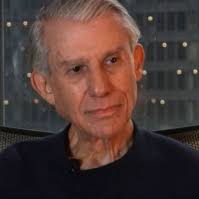This piece was reprinted by OpEd News with permission or license. It may not be reproduced in any form without permission or license from the source.
-- doing it with depositors' funds would require they establish separate institutions, not called banks.
If Congress reclaims its money-creation power, banks will have to maintain 100% reserve requirements (available for withdrawals), to "avoid the electronic duplication that is the source of" money supply growth today. It would require them to raise enough money to "fund" all outstanding loans. "The 'credits' (or loans then) become 'deposits' that represent 'liabilities' of the banks, money (they) owe to the depositors." It would be secured (by borrowing) around $6 trillion or more in real money, not the fictitious kind they create today.
In turn, they'd have to raise interest rates, pay depositors less, operate on thinner margins, and likely drive customers to more competitive non-bank institutions, already controlling 80% of the market.
In December 2006, William Hummel proposed an alternative in an article titled "A Plan for Monetary Reform" under which banks could sell their existing loans to investors with ready cash if the federal debt was paid off by monitizing it with government-issued currency. Federal bond holders would need a new home for their savings with a rate of return making up for what they lost. Investment funds would likely create new vehicles for it. They could buy bank loans with investors' money and bundle them as securities for resale with interest.
Selling the loans would let banks avoid incurring substantial new debt to meet the new 100% reserve requirement. Bank "balance sheets could be wiped clean and they could start fresh with new loans" - operating traditionally by borrowing low and lending higher. However, these new limitations could prove harmful, "imposing an unfair burden on unsuspecting shareholders, warranting some equitable division of the sale proceeds in compensation."
Consider also that if these type restrictions existed, banks "would have little incentive to service the depository needs of the public." A solution would be to transfer its "depository role to a system of (nationwide) bank branches acting as one entity under the (government-run) Federal Reserve." In other words, a government-run public utility.
It would make the Fed "the sole depository and only its branches would be called 'banks.' " Others would close down or become private financial institutions in whatever form they'd choose.
Robert Guttman explains that basic banking is fairly simple - to provide a safe place to store money and transfer it to others. A government agency could handle it easily. It did earlier through the US Postal System (until shut down in 1967) and can do it again.
With the restoration of traditional banks, servicing credit cards would also have to be addressed as banks might be unable to do it. One solution would be to turn credit extension "over to a system of truly national banks (authorized to operate with) the 'full faith and credit of the United States' as agents of Congress," newly empowered to create money. In addition, government banks wouldn't be profit driven enough to charge exorbitant rates. They'd be "reasonable, predictable and fixed."
Consider also that old banks (namely existing branches) could be bought to become government-run ones, or if insolvent banking giants were nationalized, their branches alone might do the job. The FDIC could hire new management or have existing ones operate under new guidelines. The difference would be that interest would accrue to the government (and the) 'full faith and credit of the United States' would become an asset of the" country.
There's one other limitation as well - 100% reserve requirements would restrict money growth so it would have to expand to meet demand by other means. One way in a system with no federal debt or interest is to let consumer debt be self-regulated as under the LETS system in which "money is created whenever someone pays someone else with 'credits,' and it is liquidated when the outstanding credits are used up."
Nationwide, "money would come into existence when it was borrowed from the community-owned bank, (then) extinguished as the loans were repaid." It's no different than how money is created now except that communities, not bankers (siphoning off interest in windfall profits), will do it. None of the above systems are perfect, but they're far better than the current corrupted one benefitting bankers, not people.
The Question of Interest - Solving the "Impossible Contract" Problem
Money controlled by banks only creates the "principle and not the interest" to repay loans. Governments, on the other hand, can "not only lend but spend money into the economy, covering the interest shortfall and keeping the money supply in balance."
However, "returning all the interest collected on loans to the government would require nationalizing" all forms of lending at interest, including banks. In the real world, a semi-private, semi-public system might work better as follows:
-- governments would create money and be its initial lender;
Next Page 1 | 2 | 3 | 4 | 5 | 6 | 7 | 8
(Note: You can view every article as one long page if you sign up as an Advocate Member, or higher).





